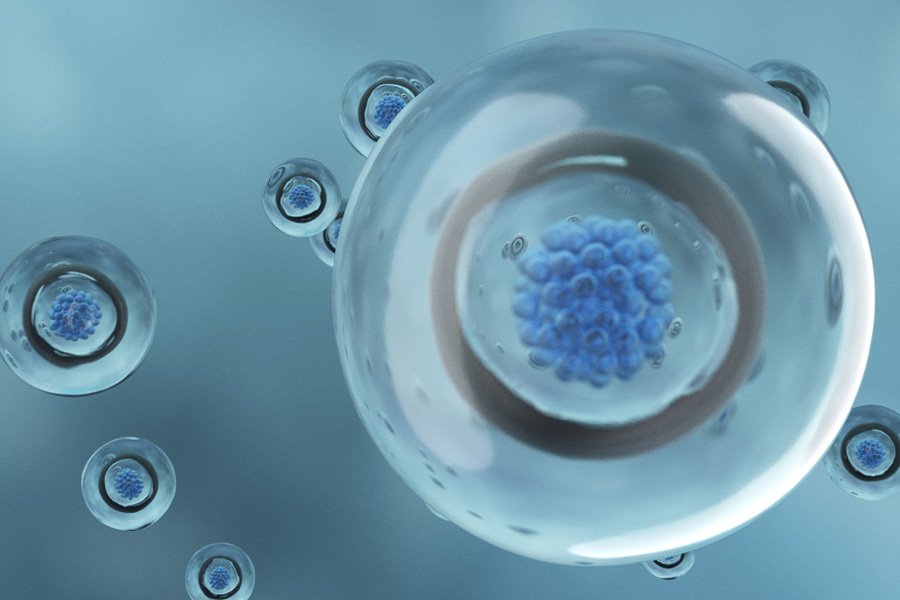PREIMPLANTATION GENETIC TESTING (PGT)
Traditionally, embryos produced by IVF are assessed microscopically to predict their ability to produce a pregnancy by their overall appearance. However, this method does not reliably predict whether or not an embryo will result in a successful pregnancy. Preimplantation genetic testing, or PGT, is a technique in which a small sample of cells are removed from the embryo, and these cells are then used to evaluate the genetic composition of the embryo as a whole. Cells removed from each developing embryo are used for genetic analysis to determine if the embryo is affected by chromosomal defects which would impact implantation, miscarriage, and may cause subsequent birth defects.
How is the Biopsy Performed for PGT?
In order to detect genetic defects, a small sample of the embryo must be biopsied and sent to an independent genetics lab. This sample of cells contains chromosomes, and the number of chromosomes will be analyzed by the genetics lab. In order to be eligible for biopsy, embryos must have continued to develop 5 and 6 days after your retrieval. Embryos at this stage of development are called a blastocyst. Cells that are removed and sent to the genetics lab come from the outside layer, also known as the trophectoderm layer, of the blastocyst. After a small group of cells is removed from the blastocyst, the embryo is frozen. This halts the embryo’s development indefinitely, and allows time for the genetics lab to receive the cell sample and screen for abnormalities. The screening process can text 2-3 weeks.
At the genetics lab, technologists use a DNA sequencing method called Next Generation Sequencing to compare the sample from each embryo to a standard that is known to be normal. When finished, a report is sent to PREG indicating which embryos have the correct number of chromosomes (also known as “euploid”). As part of this testing, the 23rd pair of chromosomes is analyzed. This pair determines the sex of the embryo, so the report can indicate if the embryo will develop into a male or female, if this information is desired.
Once we have received the genetics report, we will know which of the cryopreserved embryos are genetically normal. A genetically normal embryo can then be thawed and transferred as part of a frozen embryo transfer cycle. Pregnancy rates are generally higher when transferring embryos that have been screened via PGT as the embryo for transfer does not have any chromosomal defects.
What is the difference between PGT-A and PGT-M?
PGT-A is a test that looks for large genetic abnormalities. The “A” stands for aneuploidy, a term used to denote an abnormal number of chromosomes. These abnormalities are common in embryos, and their occurrence increases as the biological mother ages. PGT-A can only detect when large pieces of chromosomes or entire chromosomes are missing or duplicated.
PGT-M is a more detailed test that looks for a very specific genetic abnormality. The “M” stands for monogenic disorders, which are caused by variation in a single gene. Examples of monogenic disorders include sickle cell disease, Huntington’s disease, and cystic fibrosis. In order to perform this test, the genetics lab needs to know which disease they are looking for ahead of time. This is generally indicated by a patient’s carrier screening tests or if they have a family member who expresses a disease caused by a specific genetic defect. When the genetic abnormality is known, the genetic material of the embryo can be analyzed to see if that embryo could result in the birth of a child with that specific disease. It is not feasible to screen every embryo for every disease-causing mutation; thus, PGT-M is only performed when it is highly likely to improve a patient’s chances of having a healthy baby without a specific disease.
ready to take that first step?
It just takes one call. Our team of expert reproductive endocrinologists are here for you.



